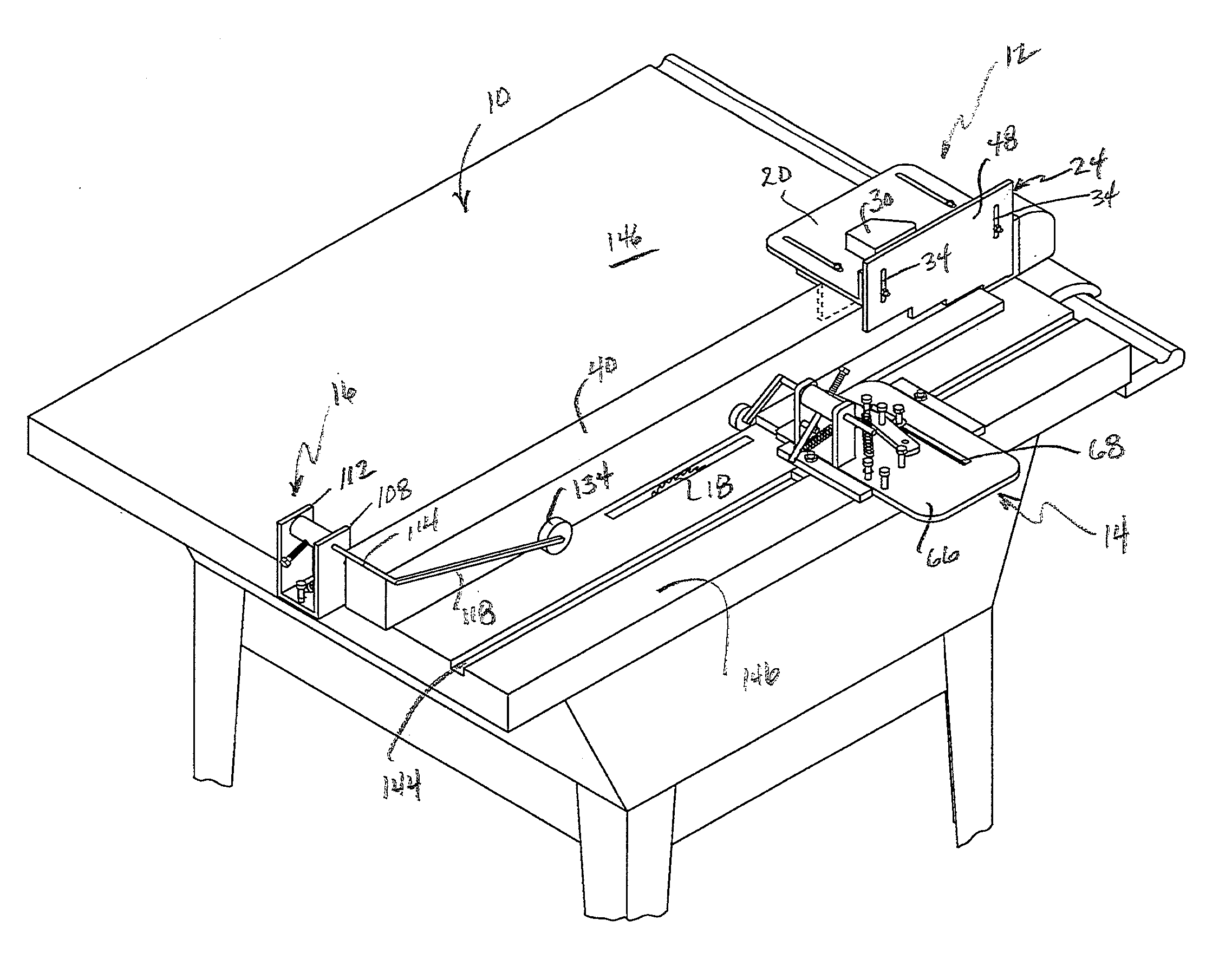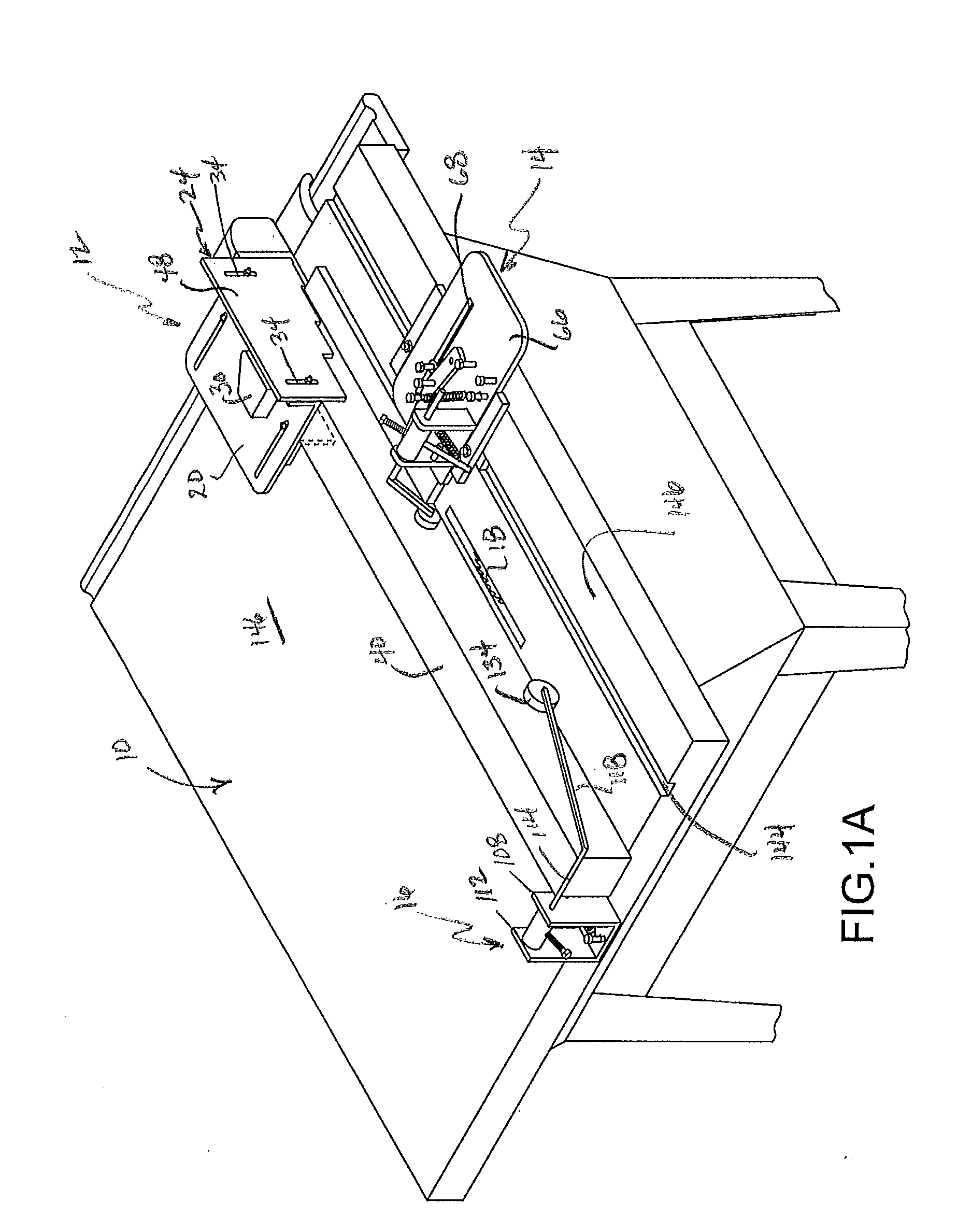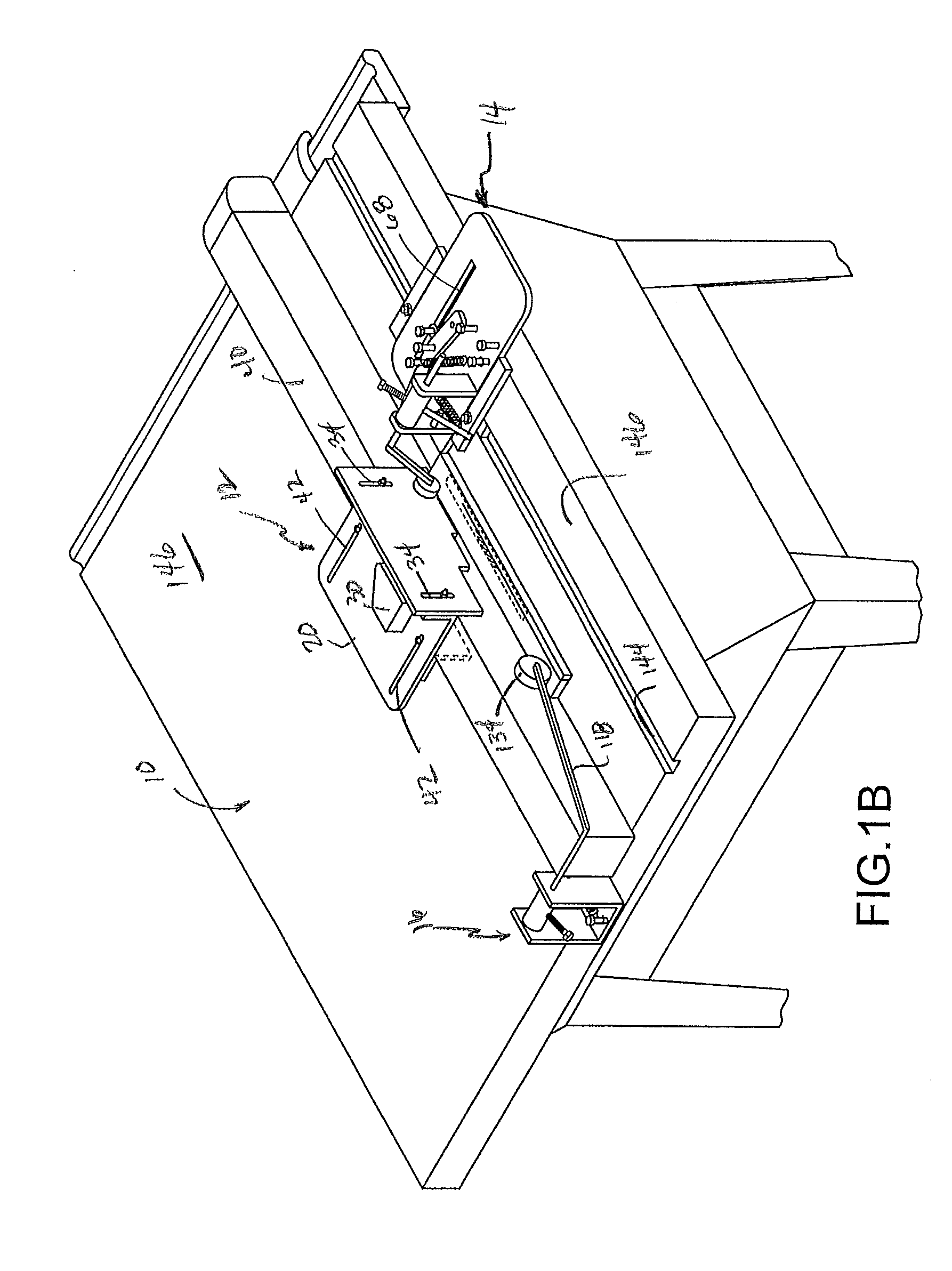Safety device for table saw
a safety device and cutting tool technology, applied in the field of safety systems for powered cutting tools, can solve the problems of affecting the physical injury and trauma of the hand and/or fingers of the operator, and the danger of the rotating blade or cutting element of the power cutting tool, so as to facilitate a variety of different cuts and use with different blades, and ensure the safety of the workpiece. , the effect of eliminating the kickback of the workpi
- Summary
- Abstract
- Description
- Claims
- Application Information
AI Technical Summary
Benefits of technology
Problems solved by technology
Method used
Image
Examples
Embodiment Construction
[0077]Embodiments of the safety system disclosed herein include multiple separate safety devices or components that can be used individually or in combination to enhance the safety of and reduce injuries to an operator of powered cutting tools. FIGS. 1A through 1C depict a table saw 10 with exemplary embodiments of three component devices of the overall system of the present invention. These component pieces are a right hand push device 12, a dual bearing hold down device 14, and an anti-kickback device 16. However, while the dual bearing hold down device 14 is typically positioned in front of the cutting blade 18 and the anti-kickback device 16 is typically positioned following the cutting blade 18, they are not restricted to those physical locations and may be positioned adjacent or in close proximity to the cutting blade, on opposite sides of the cutting blade or at other locations selected by those of skill in the art for purposes of enhancing safety and / or facilitating use of t...
PUM
| Property | Measurement | Unit |
|---|---|---|
| length | aaaaa | aaaaa |
| thickness | aaaaa | aaaaa |
| diameter | aaaaa | aaaaa |
Abstract
Description
Claims
Application Information
 Login to View More
Login to View More - R&D
- Intellectual Property
- Life Sciences
- Materials
- Tech Scout
- Unparalleled Data Quality
- Higher Quality Content
- 60% Fewer Hallucinations
Browse by: Latest US Patents, China's latest patents, Technical Efficacy Thesaurus, Application Domain, Technology Topic, Popular Technical Reports.
© 2025 PatSnap. All rights reserved.Legal|Privacy policy|Modern Slavery Act Transparency Statement|Sitemap|About US| Contact US: help@patsnap.com



